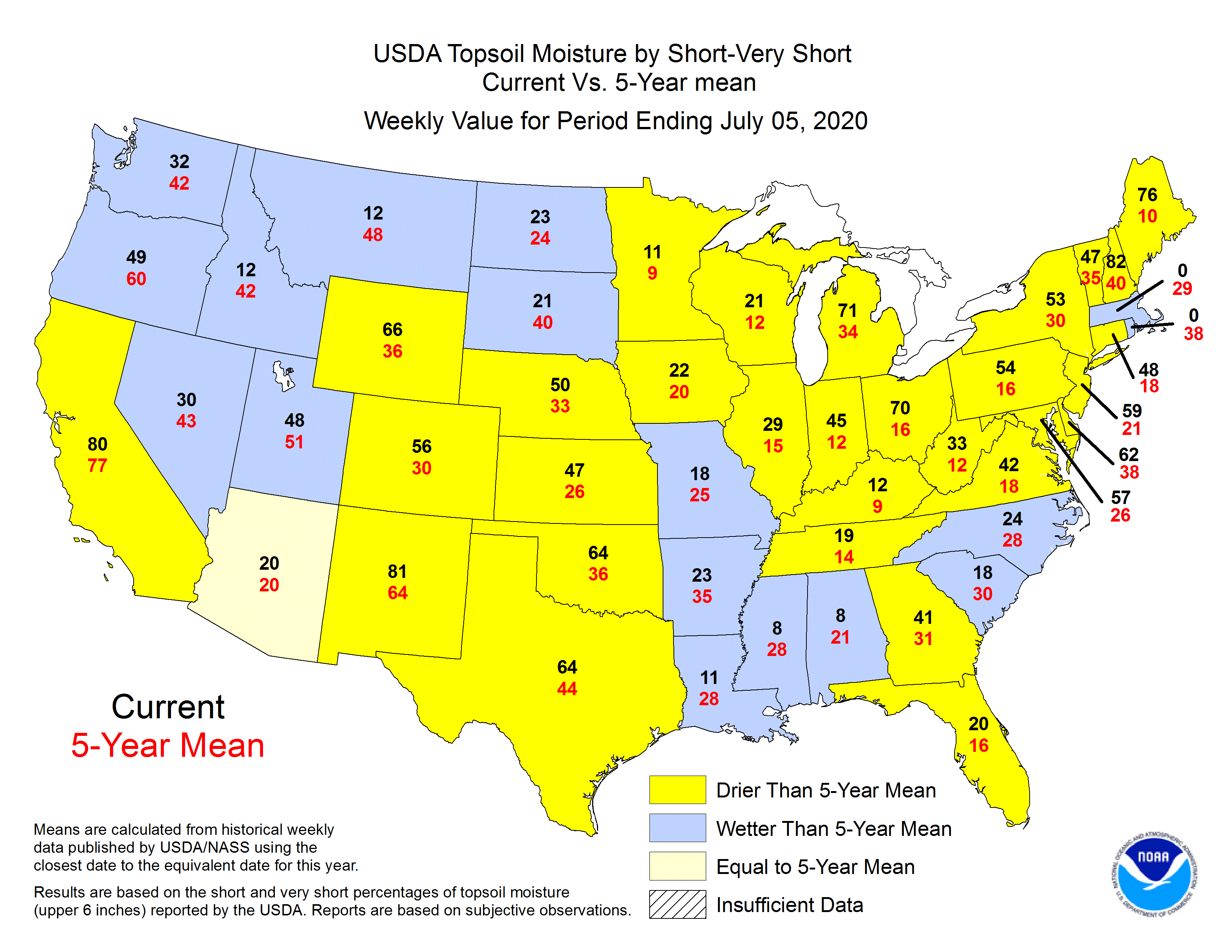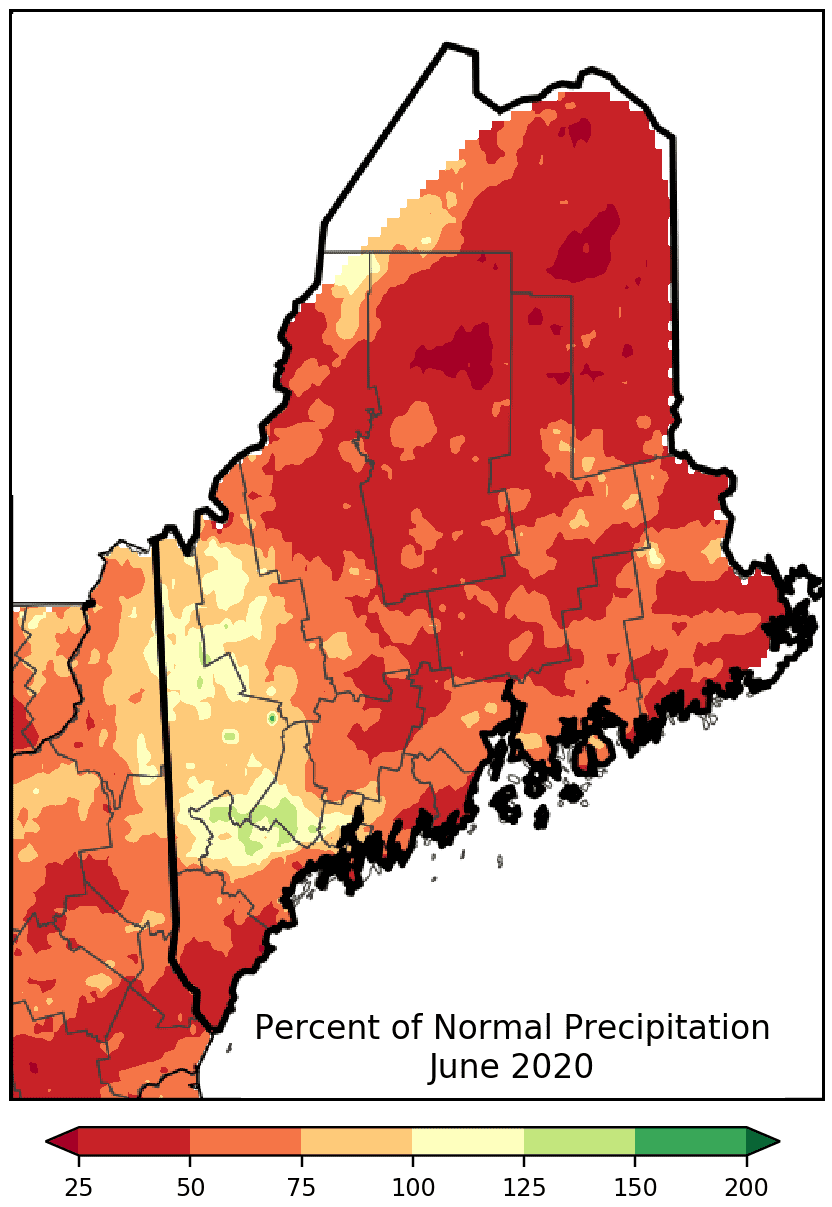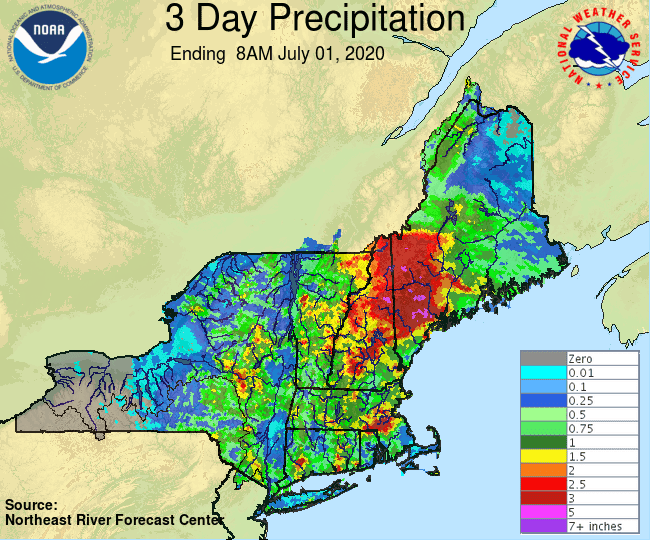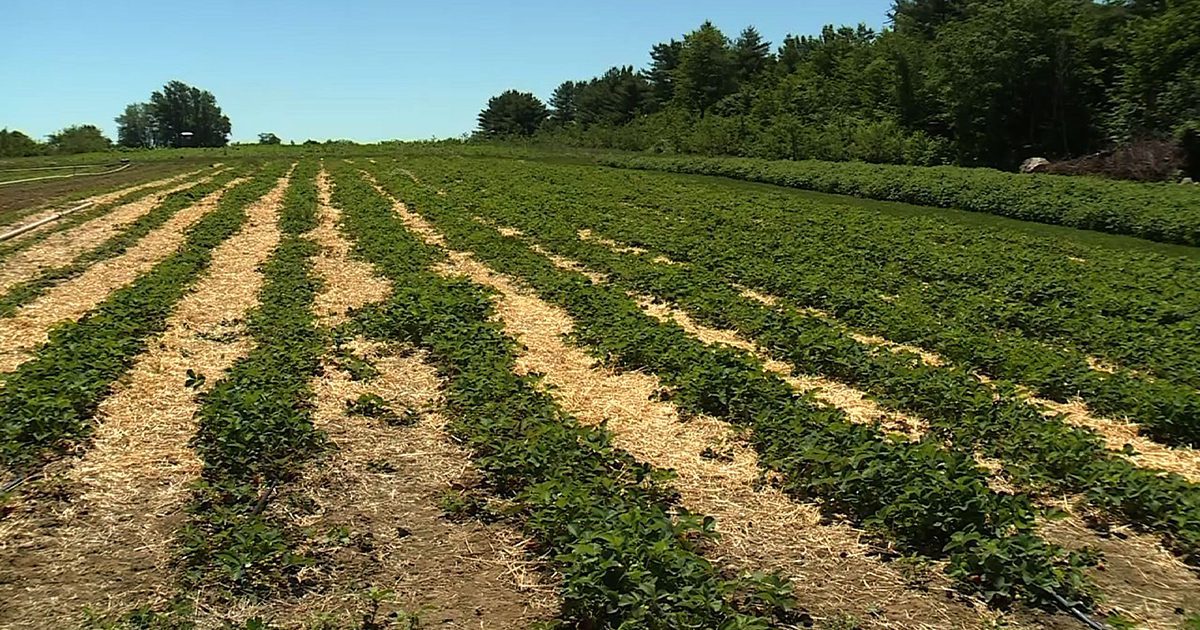The words of University of Maine soil scientist Ivan Fernandez reveal a troubling truth.
“Never again will we have the climate system of the 20th century,” wrote Fernandez, co-chair of the Maine Climate Council’s Scientific and Technical Subcommittee, in a recent issue of Wild Seed magazine.
On a rapidly warming planet, historical weather records no longer signal what the future will bring.
Nearly three-fourths of Maine is now in a moderate drought with an additional 13 percent labeled “abnormally dry.” Yet even the premise of “normal” precipitation levels is now in question. Weather anomalies may be the only normal going forward, and Mainers need to be better prepared.
Stuck weather systems
During June, Maine vaulted into a “flash drought,” a relatively new meteorological term for a rapid-onset dry spell. Scientists view droughts through three lenses: meteorological (extended deficits in precipitation), agricultural (decreased soil moisture) and hydrologic (lowered levels of streamflow and groundwater)
Maine experienced a meteorological drought soon after the arrival of a persistent atmospheric high that delivered no precipitation, just record-breaking heat that sapped soil moisture and evaporated surface waters.
Rain deficits can be prompted by “atmospheric blocking patterns” linked to a weakened jet stream. Climate scientists attribute this slowing of the jet stream to the decline in Arctic sea ice, which has reduced the temperature differential between the poles and equator that helps drive atmospheric currents.
A weakened jet stream increases the odds of both heat and cold waves, notes Maine state climatologist Sean Birkel, and can lead to more extreme wet or dry conditions. The related blocking patterns can remain in place for weeks.

Tending toward extremes
Despite its sudden onset, this drought should not come as a surprise. Drier dry stretches and wetter wet periods will likely characterize a more “intense hydrologic cycle” as a warming climate accelerates surface evaporation and fuels more extreme rainfall events, according to the Maine Climate Council’s draft report, “Scientific Assessments of Climate Change and Its Effects in Maine.”
Between 1958 and 2012, the Northeast saw a 71 percent observed change in heavy precipitation events (as recorded at monitoring sites). These deluges can erode topsoil and generate runoff pollution, rather than contributing to groundwater regeneration as gentler rains might.

Since the early 2000s, Maine has seen an overall increase in summer precipitation that scientists attribute to warming ocean temperatures and melting Arctic ice. Climate models for the Northeast predict further precipitation increases of 5 to 10 percent over coming decades, with most falling in winter and spring.
But portions of the state have also hit “abnormally dry” stretches every summer for the last five years, notes John York, natural hazards planner for the Maine Emergency Management Agency.
As Maine’s climate warms, “it remains uncertain whether drought becomes more or less prevalent,” Birkel says, “but it’s a plausible scenario.” As temperatures warm, the council report notes, “increased evaporative demand is expected to reduce near-surface soil moisture and offset any projected increases in precipitation during the warm season.”
And the “warm” season is already getting downright hot. June, not even Maine’s warmest month historically, broke temperature records this year. Among the 10 hottest June days ever in Caribou, four were last month.
Maine residents, many of whom live in poorly insulated homes without cooling from ductless heat pumps or air conditioning, aren’t well-equipped to deal with heat. Nor are residents prepared for the growing hydrologic extremes – longer dry spells interspersed by heavy rains.
Adapting to extremes
The flash drought caught our family by surprise. Our rainwater cisterns, set out too late, sat empty and useless through the parched weeks of June. Some garden seeds failed to germinate and some seedlings withered in soil that couldn’t stay moist, even with frequent watering.
Drip irrigation is a good option for many commercial growers and some homeowners, but not for those with widely dispersed plantings. So as Maine descended into drought, I went in search of guidance on how best to help our plants cope.
I found general resources on mulching, an approach I use extensively with trees, shrubs and brambles. But there were few specifics about making vegetable gardens more drought-hardy. Should all vegetable plants be mulched? How large should seedlings be before applying mulch and how close to the plants should it go?
Guidance on watering regimes left me with still more questions. Common guidance is that plants need an inch of water a week, but online calculations for how that translates to watering-can gallons or hose watering vary widely.
Seeking ideas for how to improve our rainwater collection system, I located only one rather technical factsheet. Few resources addressed the safety considerations involving rainwater on food plants (from roofing material residues and bacterial concerns to mineral levels).
In search of answers, I spoke with John Jemison, a University of Maine extension professor in soil and water quality. The starting point for garden resilience through wet and dry conditions, he noted, is “building better soil structure” – which usually entails adding more organic matter (such as compost). To protect soils, he recommends relying on raised beds or walking on boards, which distribute weight to reduce compaction.
Jemison advises gardeners to test soil moisture down to the depth of their fingers and water more deeply less often – rather than doing frequent surface wettings.

Learning to adapt
University of Maine Cooperative Extension has a wealth of valuable guidance on managing gardens and yards, and a massive manual used to train Master Gardener Volunteers – which includes stormwater management techniques like creating rain gardens and using cover crops to minimize erosion.
But Maine still falls short in providing resources for coping with dry spells in residential and commercial settings – tips for how to harvest and distribute rainwater, safely reuse greywater, mulch food plants and select more drought-tolerant landscape plants (known as xeriscaping).
The Maine Emergency Management Agency has some drought guidance, but York, its natural hazards planner, acknowledged that public outreach primarily happens through periodic statements from an interagency drought task force, adding that “a central (informational) hub would be beneficial for sure.”
Navigating unprecedented weather patterns will be challenging, but Maine will fare better if residents are well-informed and prepared.
Flash floods and flash droughts can be hard to predict, but the long-term forecast is all too clear: We face a future of hydrologic extremes.
Resources
- Northeast Regional Climate Center offers weekly temperature and precipitation updates and seasonal outlooks.
- Maine’s Climate Future 2020 Update
- Climate Data for Maine (through 2019)
- Gardening in a Warming World: A Climate Smart Gardening Course Book (Cornell Cooperative Extension)
- Citizen’s Guide to Colorado Water Conservation (not directed to Maine, obviously, but offering some of the guidance that isn’t yet available here)
Editor’s Note: An earlier version of this story referenced outdated information about the portion of Maine that is labeled as being in in a moderate drought or abnormally dry by the U.S. Drought Monitor. This story has been updated to reflect the most recent data from July 7.







